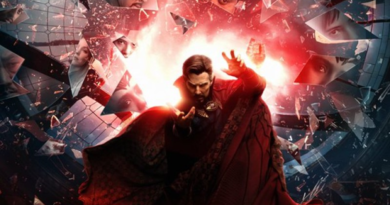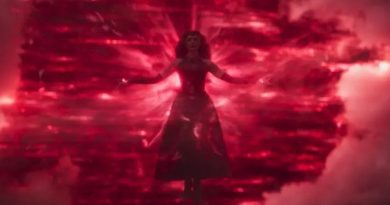The Power in Wanda: A Search For Clues In WandaVision
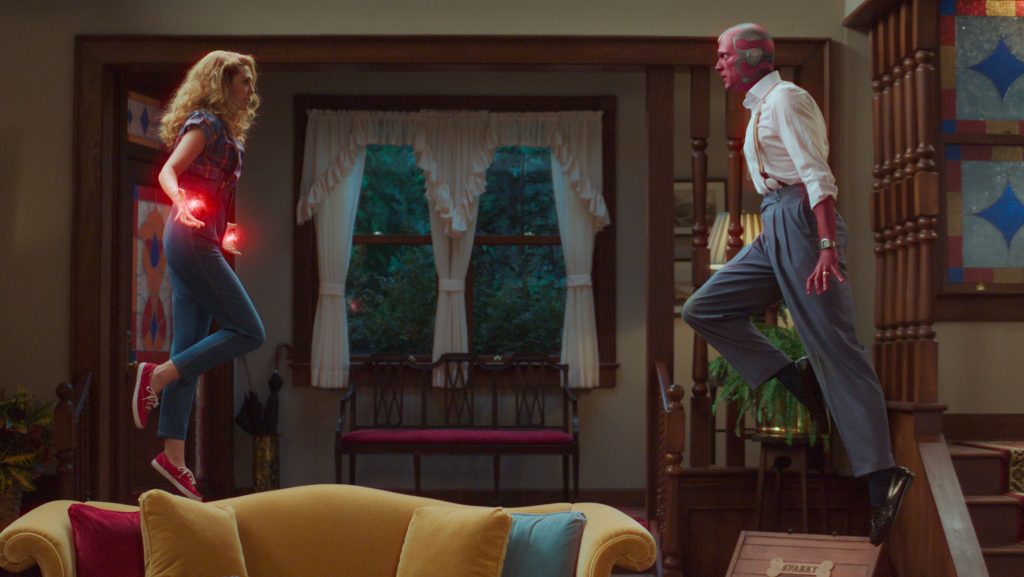
In WandaVision’s fifth installment, aptly titled “On A Very Special Episode,” the mystery around Westview grows even as plenty of pertinent information is doled out to the captive audience. The sense of horror mounts. Emotional turmoil embroils every character inside the anomaly, from Vision declaring his fear to Norm begging to make “her” stop. The fear is real, but is Vision? And who is controlling Norm and the other residents of Westview? The tone harkens back to the seminal science fiction horror story Frankenstein; or, The Modern Prometheus (1818) written by Mary Shelley, in which scientist Frankenstein deals with his grief by experiments that bring an artificial intelligence to life. So too is grief a central theme for the characters in this post-Blip age of the Marvel Cinematic Universe. For those pondering the dynamics of WandaVision, Frankenstein appears to offer many clues. But like Shelly’s classic, reality is often obfuscated by the lens of how we perceive a monster. At the same time, the many clues to what is happening to Wanda within the show are hidden in plain sight.
To talk about where Wanda is in her overall story arc, it is important to understand where she has been. After her parents were killed in an air raid by a Stark bomb, Wanda and her twin Pietro volunteered for Hydra in hopes to end the violence in their country of Sokovia. Former Nazi and Hydra supervillain Wolfgang von Strucker exposed the twins to energy from the Scepter, a device made to contain the Mind Stone. The Mind Stone is one of six elemental crystals created during the Big Bang that contain the powers of the cosmic universe. (More basics on the Infinity Stones.) Mythically they represent cosmic powers that define the parameters of the storytelling universe’s magic, sort of a blending of Star Wars’ Force and Avatar’s four elements. Wielding chaos magic powers obtained from Strucker’s experimentation, Wanda exposes her abilities in a battle against the Avengers. Free from Strucker’s influence, she forms an alliance with Ultron, a rogue artificial intelligence Tony Stark had created to protect Earth. As Ultron gains power, he seeks a more corporeal form; as he is downloading into a synthezoid body, Wanda realizes through her telepathic powers Ultron’s ultimate goal is to destroy all human life. She stops him from uploading to the synthezoid, who ultimately becomes Vision: a hybrid of Tony Stark, Jarvis, Ultron, Thor’s magic (granted by the Space Stone), and the Mind Stone. Wanda and Vision join the Avengers and fight to stop Ultron. Not without a cost, as her brother dies saving a young boy.
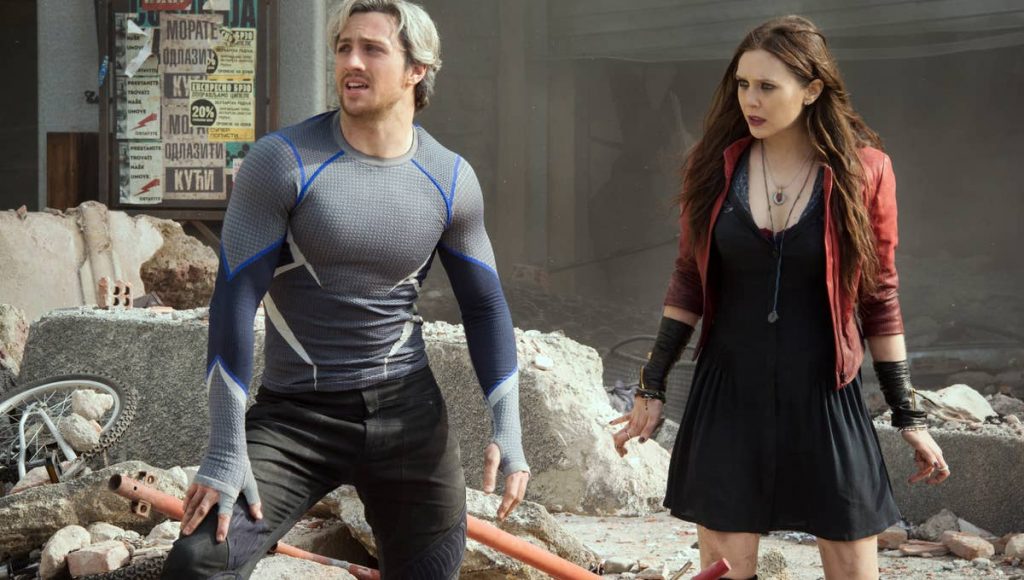
If we were to view Wanda’s arc after her story in Avengers: Age of Ultron through the lens of Star Wars, Wanda has become a Padawan superhero. When we next see her, Captain America, Black Widow, and Falcon all serve as mentors in the first act of Captain America: Civil War. Star Wars is a fitting comparable mythology, as Marvel head Kevin Feige was inspired to attend USC film school by his admiration for George Lucas. References to the space opera franchise show up in a myriad of ways across the MCU, from fun Easter eggs, such as Spider-Man referencing to downing the AT-ATs on Hoth in Civil War, to broader themes, borrowing story structure from The Empire Strikes Back in how Civil War is constructed. Feige doesn’t simply nod to the Original Trilogy movies in Civil War, though; the descent of the Avengers parallels the missteps of the Jedi Order in Attack of the Clones, the middle Prequel Trilogy movie. In WandaVision, SWORD Director Hayward brings up the fact that Wanda hasn’t taken a superhero alias to raise doubt about her fealty to the Avengers and the side of good. Realistically it reflects the fact that she isn’t a fully formed superhero, not yet a Jedi Knight in Star Wars terms. As the conflict within the superhero team mounts in Civil War and bleeds into other characters’ stories, Wanda’s training takes a back seat to a life on the lamb interspersed with chance rendezvous with Vision. Although Natasha acts as a mother figure and mentor following the events of Civil War, Wanda’s training is incomplete and the full extent of her growing powers remains untapped.
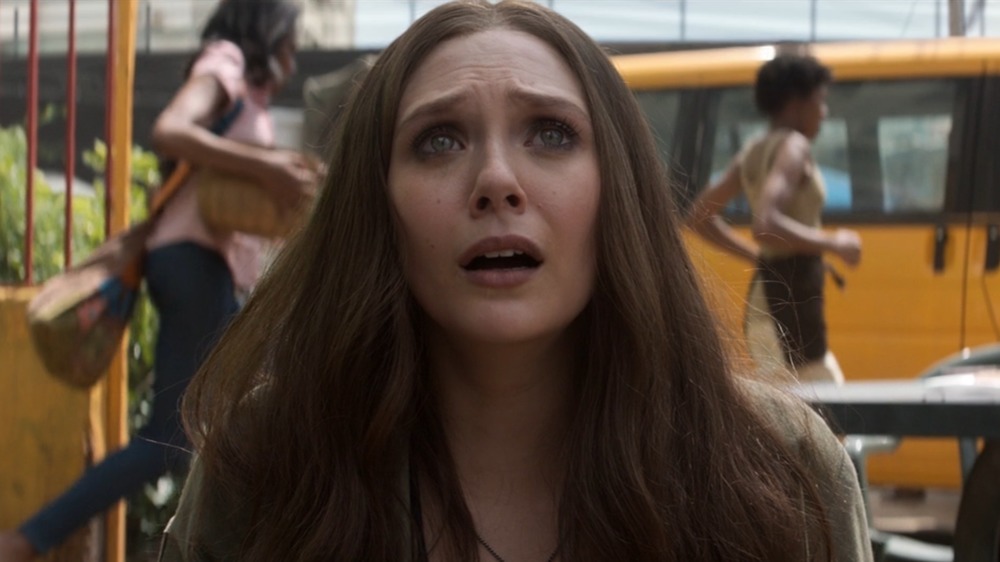
The perils of having great power and partial training creates a pivot point for the Avengers when Crossbones attempts to blow up Captain America in Lagos; it’s a suicidal choice and many innocents would have died on the ground along with Steve Rogers and Wanda Maximoff. She contains the blast and sends it hurtling upwards, losing control of the sphere of explosive energy as it rises. The blast decimates the top floors of a high-rise building; instead of innocent lives lost on the ground, there are deaths above. No matter, the act of terrorism belongs to Crossbones alone. Yet Wanda is branded a terrorist, a point SWORD director Hayward reiterates in WandaVision. This troubled mission leads to the Sokovia Accords, making superheroes answerable to the United Nations, a position Captain America isn’t willing to accept given his history with SHIELD. Ultimately Wanda sides with Steve, and she is arrested and jailed in a straight jacket to contain her magic.
The Infinity War duology reveals Wanda and Vision on opposite sides of the Avengers’ divide. Steve Rogers has freed his allies from jail; Vision still works for Tony Stark. Wanda and Vision, both granted powers by the Mind Stone, meet secretly, cementing their love, until Thanos sends his thugs to take the Mind Stone from Vision. Thanos’ goons pursue Vision to Wakanda, where Shuri tries to separate Vision from the stone. In the end, with Thanos wielding the Infinity Gauntlet closing in and only the Mind Stone left for him to complete his gauntlet, Wanda agrees to destroy the Mind Stone, an action that will end Vision’s life – but one that he has requested, fully knowing the consequences. Going back to Star Wars mythology, this is the sacrifice Anakin Skywalker was unable to make: to have an attachment, but make the right choice despite it. The test isn’t simply posed to Wanda and Vision, but several characters throughout Civil War: Gamora and Peter Quill, Doctor Strange, and even Thanos.
Stonekeeper: The Soul Stone holds a special place among the Infinity Stones. You might say, it is a certain wisdom.
Thanos: Tell me what it needs.
Stonekeeper: To ensure that whoever possesses it understands its power, the stone demands a sacrifice.
Thanos: Of what?
Stonekeeper: In order to take the stone, you must lose that which you love. A soul for a soul.
Unfortunately, Wanda’s choice to defend all life at the cost of her lover’s life is short lived; Thanos rewinds time using the Time Stone and takes the Mind Stone, killing Vision for a second time before Wanda dies in the Snap of Thanos’ fully charged Infinity Gauntlet. It’s remarkable, though, that Wanda passes the test of sacrificing someone she loves in the proximity of the Soul Stone on the Gauntlet. When Hulk reverses the Snap in Endgame, Wanda again faces off with Thanos, who Captain America, Thor, and Iron Man together struggle to contain. She nearly beats him. Thanos’ tactics invert Wanda’s selfless choice in the Battle of Wakanda: he selfishly sacrifices his own soldiers to gain an advantage over her. Later in the battle, Captain Marvel nearly stops him until Thanos separates the Power Stone from the gauntlet to punch back. These sequences in Endgame reveal that two humans enhanced into superheroes by an Infinity Stone wield superpowers making them as strong as Thanos. In its fourth episode, WandaVision goes out of its way to reiterate this point in dialogue between Monica Rambeau, Darcy Lewis, and Jimmy Woo.
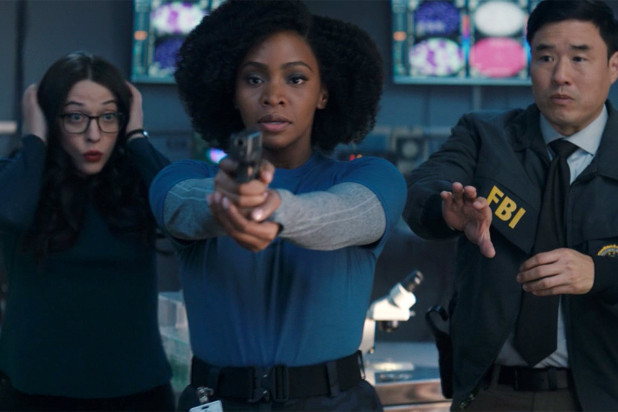
The conversations between these characters are where the mystery surrounding Westview is explored and elaborated. (There are clues elsewhere, but more on that later.) Jimmy Woo initially believes Wanda is projecting an elaborate illusion, a power she was given by the Mind Stone. Later Monica confirms instead that physical objects are being manipulated inside the Hex, a reality-warping power associated with the Reality Stone. These two notions play out within the context of Wanda’s broadcast, where Vision is trying to become a Master of Illusion for the town and Wanda has to manipulate reality so as to not give away their secret identities. Darcy also puzzles at the quick jumps in the broadcast, which she later determines are Wanda’s edits. While manipulating time is an overall theme of the WandaVision broadcast, especially in its path through the decades of classic television shows, Wanda’s ability to rewind time within the events occurring inside the Hex, the way Doctor Strange is shown to do using the Time Stone, has eluded the super sleuth trio so far.
With three of the Infinity Stones’ powers in play within the Maximoff Anomaly, what about the other three: the Soul Stone, the Power Stone, and the Space Stone? The Soul Stone grants control over life and death. While the birth of the twins might seem to be a weird mechanic of the sitcom broadcast from Westview, Billy and Tommy apparently operate outside of Wanda’s sphere of magical influence, just as she can’t control the stork or Vision. At what point will Monica and company figure out that the twins, the stork, and Sparky the dog are living creations of the anomaly and not subjects of it? Agnes appears to understand this dynamic but it’s unclear what she can do about that fact. Darcy is very close to uncovering the Power Stone aspect, when she points out that it would require enormous amounts of energy to accomplish such an expansive reality-bending feat. The Space Stone is probably the newest clue, with the appearance of Pietro from another dimension. While the Reality Stone can allow access to other alternate universes, the Space Stone would enable the teleportation to bring Pietro across the multiverse and into Westview. One truth from the Marvel Cinematic Universe is that one stone on its own is powerful, but in combination their power increases exponentially.
Discussion around the Infinity Stones’ power in WandaVision came into focus as speculation pointed to the episode “commercials” seemingly aligning with the Stones. While that is likely true – and that reinforces Endgame‘s demonstration that Wanda is strong enough to wield their power – the commercials’ primary tie is to the foundational events that have shaped her life. The Stark toaster’s beeping countdown harkens back to the bombs that killed her parents and trapped her and Pietro. The Strucker watch refers to the experiments she endured that led to her powers. The Hydra soak ad encapsulates the manipulation of the villainous organization that tempts its recruits with calls to change the world. Of all these, the tag line “Find the Goddess within” is the most intriguing. Wanda has now created life, children who are themselves exhibiting superpowers. If speculation surrounding Monica’s expulsion from the Hex bears out, Wanda also has created a new superhero by means of a powerful energy blast, similar to Carol Danvers’ empowering in Captain Marvel. And she has summoned a superhero from another dimension. Wanda may be a goddess, but in true Greco-Roman fashion, the Lagos paper towel commercial reminds us of the mess gods can make.
As speculation continues, most of the discussion seems to drift back to past lore, to which plenty of nods exist within WandaVision. But it’s important to note that all of those stories were told by men. In an interview with io9, showrunner Jac Schaeffer (who also was a writer for Captain Marvel and Black Widow) addressed Wanda’s portrayal in the previous tales: “There are a lot of really terrific comics and stories about Wanda. But I do think she is often used as a tool, and diving into what’s really happening inside of her was a real challenge because of the thinness of her characterization in so many storylines. … There’s this misunderstood element to her that’s a constant injury to her because no one can see her for who she is and all of her complexity except for Vision, and I think that’s a lot of what their connection is.” Encapsulating the interview, io9’s Charlies Pulliam-Moore writes, “When we spoke with series creator Jac Schaeffer recently, she explained that while the mystery element is definitely an important part of WandaVision’s story, it was also important to her to keep Wanda’s agency intact.” (emphasis added)
Just as Captain Marvel reimagined Carol Danvers’ origin story in the cinematic universe to give its female lead more agency, Schaeffer’s intentions seem pretty clear: to reframe Wanda as an agent of her own destiny. That doesn’t mean she can’t make mistakes. When AV Club’s Marah Eakin asked Schaeffer about writing female superheroes, she explained, “I like writing women. I like writing allegory,” before pointing out the need for representation and social commentary. Interestingly enough, WandaVision’s fifth episode, where the SWORD director pointedly frames Wanda as a terrorist even though three weeks prior she tried to save the world, parallels the gendered dynamic of representation of women revealed in the documentary Framing Britney Spears, out this week, that tackles the media’s and society’s own perilous scrutiny of the young woman. Schaeffer’s allegory in WandaVision appears to be using society’s willingness to paint young women as villains to her storytelling advantage. While Hayward may take on the role of obstacle or a foe to be defeated, perhaps Marvel is tackling the greater systemic barriers to women claiming power for their own – in the cinematic universe and the real world, as well.
To date the MCU has tackled grief as it has related to Tony Stark, Steve Rogers, Clint Barton, and Thor. Wanda has had as much tragedy, so it’s intriguing to see her have a chance to work through heartbreak, which extends beyond Vision and her brother. Wanda has lost mentors and found family in Natasha and Steve. Wanda is truly alone with Vision gone. It’s almost as if the Hex is a cocoon, and what will emerge will be like those butterflies she set loose in the nursery accidentally. All signs point to Wanda having the ability to harness the power of all Infinity Stones. She has the power to write her story. That it’s a story about grief and being misunderstood as a woman within a superhero franchise… it’s about time.
WandaVision, Episode 6 continues this Friday on Disney+
- Hyperspace Theories: SKELETON CREW Ahoy! - December 29, 2024
- Hyperspace Theories: WICKED Part I Rises to the Moment - December 6, 2024
- Columbia’s Vader™ Collection Launches Dec 5 - November 27, 2024









